Close-up photography possibilities
The Sigma 18-300mm f/3.5-6.3 DC Macro HSM C (Sigma 18-300mm) is a third-party all-in-one super-zoom available in Canon, Nikon, Sigma, Sony, and Pentax APS-C lens mounts. Offering an equivalent 27–450mm focal length on APS-C DSLRs, it covers wide-angle through to super-telephoto focal range, making it a convenient multi-purpose lens for vacations, photography day trips, and general photography. To cover such a wide focal range, as well as to keep the size, weight, and cost reasonable for its target market, the $499 Sigma 18-300mm uses a “slow” variable maximum aperture. At the widest 18mm focal length, it boasts a maximum f/3.5 aperture, which reduces to f/6.3 as the focal length is increased — impacting shutter speeds and available light for the autofocus system. Sigma’s built in HSM autofocus motor facilitates improved AF performance, however, and the Canon, Nikon and Sigma versions feature stabilization, which is particularly useful for getting sharper shots at long focal lengths with slower shutter speeds. Neither the Pentax nor the Sony versions require lens-based stabilization, however, thanks to the camera-based sensor shift solution preferred by these manufacturers.
The Sigma 18-300mm features macro capability, with a 39cm minimum focus distance achieving a 1:3 magnification ratio. Its close-up photography potential can be improved to a 1:2 magnification on focal lengths between 80 and 300mm using Sigma’s $55 AML72-01 close-up filter (available separately). The optical arrangement utilizes 17 elements in 13 groups to facilitate the wide focal range, including four FLD and one SLD element to help improve image quality. The Sigma 18-300mm is also compatible with Sigma’s $59 USB dock, for updating the lens firmware and fine-tuning the focus parameters. Read on to see how the Pentax KAF mount version of Sigma’s latest super-zoom scores in our industry-standard lens metric tests.
Key specifications:
- Pentax KAF lens mount
- 27-450mm equivalent APS-C focal length
- Variable f/3.5 to f/6.3 maximum aperture
- 76.5 to 5.4-degree angle of view
- 1:3 magnification / 39cm minimum focus distance
- Compatible with Sigma AML72-01 close-up lens filter
- HSM AF motor
- 72mm filter thread
- 17 elements in 13 groups
- Weight 585g
- Length 79 x 101.5mm (D x L)
Measurements: Sharpest KAF super-zoom yet
Achieving an overall DxOMark score of 15 points tested on the Pentax K-5 IIs, the Sigma 18-300mm is the top-ranked super zoom we’ve tested for the Pentax KAF lens mount. Scores range from a high of 15 points on the Pentax K-5 IIs to a low of 9 points on the older K20D DSLR. Comparisons to own-brand super-zoom options from Pentax, as well as to an older Sigma alternative, show that scores are close, but the new Sigma 18-300mm provides the greatest focal range, joint best sharpness results, and the least distortion and vignetting.
The Sigma 18-300mm resolves the greatest sharpness at the wider focal lengths up to 85mm, using wider apertures up to f/11. It’s sharpest at 35mm f/5.6, where it achieves a respectable 65% acutance in the center of the frame, dropping to around 60% in the outer field.
Closing down the maximum aperture 2/3 of a stop to f/8 at 300mm delivers the greatest resolution at around 60% acutance in the center and 55% at the edges. The maximum f/6.3 aperture at 300mm displays greater edge softness, however, and diffraction affects overall resolution at narrower apertures, which reduces to below 50% at f/22.
As you’d expect with slow variable aperture, light transmission is reduced on the Sigma 18-300mm as focal length is increased. We measured transmission at 7.1 TStop at 300mm, resulting in a dark viewfinder with limited light for the autofocus system.
Distortion is well-controlled, with some minor barrelling at 18mm and noticeable pincushion at 35mm, but as you zoom in from 50 to 300mm, the pincushion effect reduces. Chromatic aberrations are also effectively minimized on the Sigma 18-300mm, and while the global map shows that that fringing is a little more prevalent at the wider focal lengths, it isn’t really a big issue at any setting. Some vignetting, or corner shading, of over –1Ev occurs at 18mm f/3.5, meaning that it would benefit from some post-production correction, but the effect is reduced at the maximum aperture setting using longer focal lengths, and is almost completely eradicated from f/8 onwards.
Sigma 18-300mm f/3.5-6.3 vs. Pentax DA 18-270mm f/3.5-6.3 vs. Sigma 18-200mm f/3.5-6.3 II
The $555 Pentax smc DA 18-270mm F3.5-6.3 ED SDM and the $399 Sigma 18-200mm F3.5-6.3 II DC OS HSM Pentax are similar budget super-zoom propositions, just with a little less reach at the long end of the zoom. Sharpness is just ahead on Sigma 18-300mm, scoring 7 P-Mpix overall, compared to 6 P-Mpix for the Pentax 18-270mm and the Sigma 18-200mm. The Sigma 18-300mm offers the best resolution of the three at 300mm f/6.3, with good center sharpness and better edge resolution compared to the competition.
The sharpness sweet spot for all three lenses is 50mm f/8, where they offer very nearly uniform resolution, with the Sigma 18-300mm the sharpest, achieving around 70% acutance at this setting . The Sigma 18-200mm offers the best edge resolution at 18mm f/4, as well as greater overall sharpness at this setting compared to the Pentax 18-270mm, which could be an important factor if you shoot a lot at the wider focal lengths with a super-zoom.
All three lenses offer essentially the same light transmission and geometric distortion, with some barrelling at 18mm and heavy pincushion 35mm, which improves as the focal length increases. Both Sigma lenses handle chromatic aberration better at the long end of the focal range compared to the Pentax 18-270mm, which requires some edge correction at 300mm f/6.3, but the Sigma 18-200mm fringes more at wider focal lengths compared to the longer focal length Sigma and Pentax options.
Conclusion: The best in category
Sigma’s latest 18-300mm super zoom boasts a greater focal range compared to its predecessor, the Sigma 18-200mm, and manages to improve overall image quality, too. Lens metric scores are towards the lower end of the performance spectrum compared to bigger, heavier, more expensive and less versatile options, however, which is the price you pay for the convenience of a lightweight super-zoom. With greater sharpness, less distortion, and fewer chromatic aberrations, the Sigma 18-300mm is the best-performing lens of its type on the Pentax K-5 IIs, slightly outperforming Pentax’s own 18-270mm alternative. What’s more, its 1:3 magnification capabilities and compatibility with Sigma’s AML72-01 filter for closer 1:2 macro photography open up some creative possibilities. If you’re in the market for a Pentax KAF lens mount super-zoom, put the Sigma 18-300mm at the top of your list.


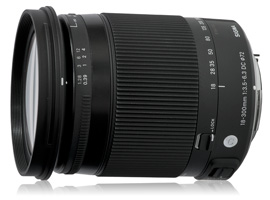




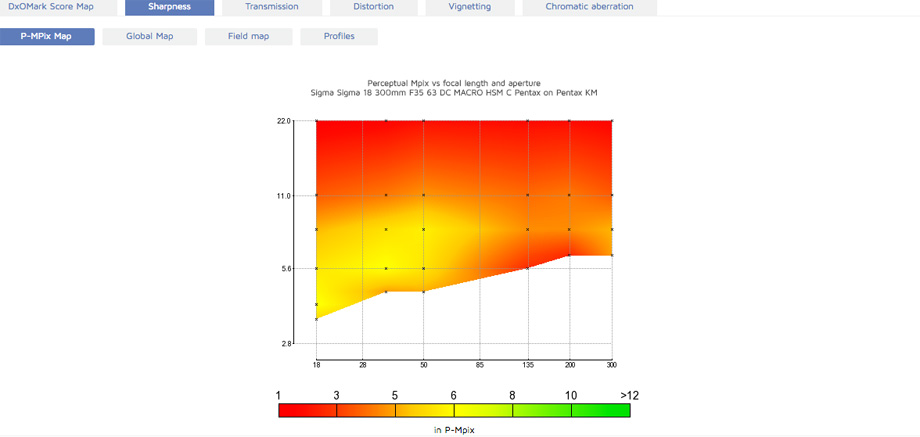
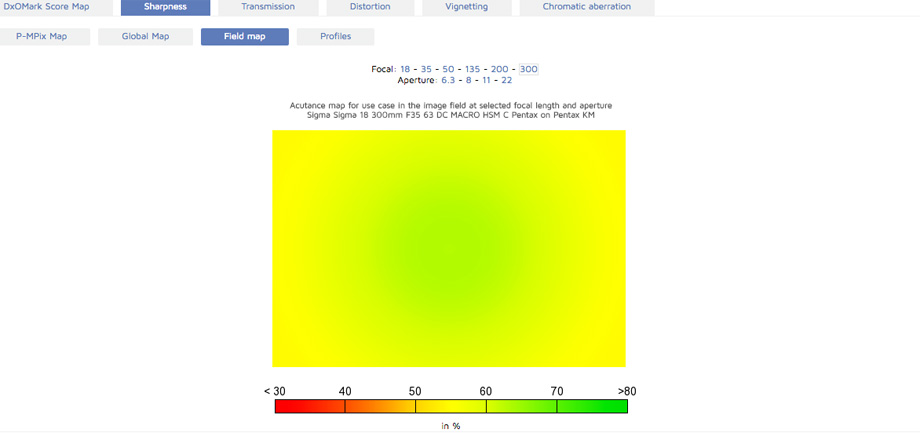
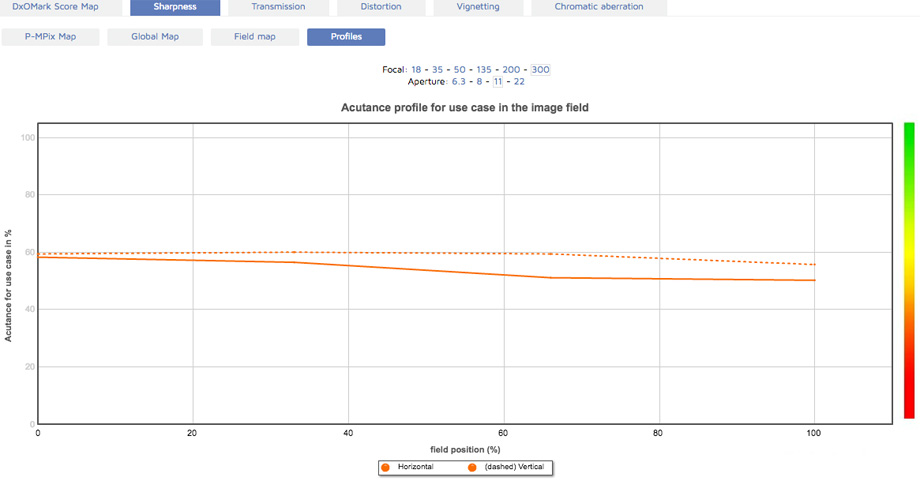



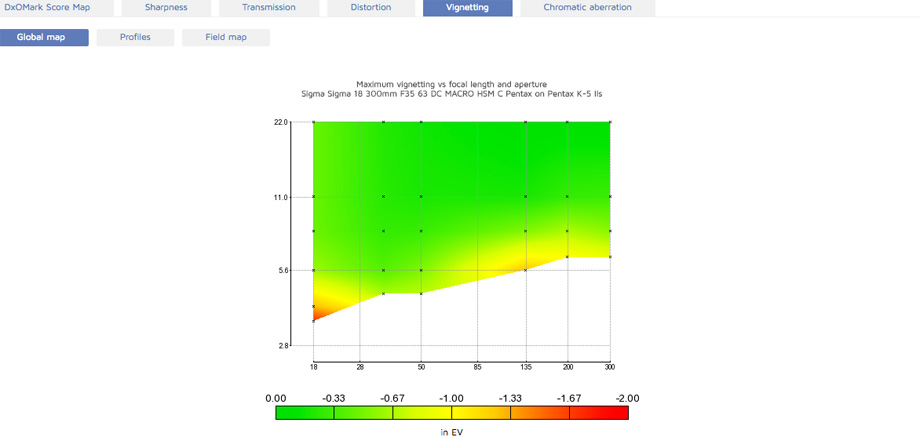
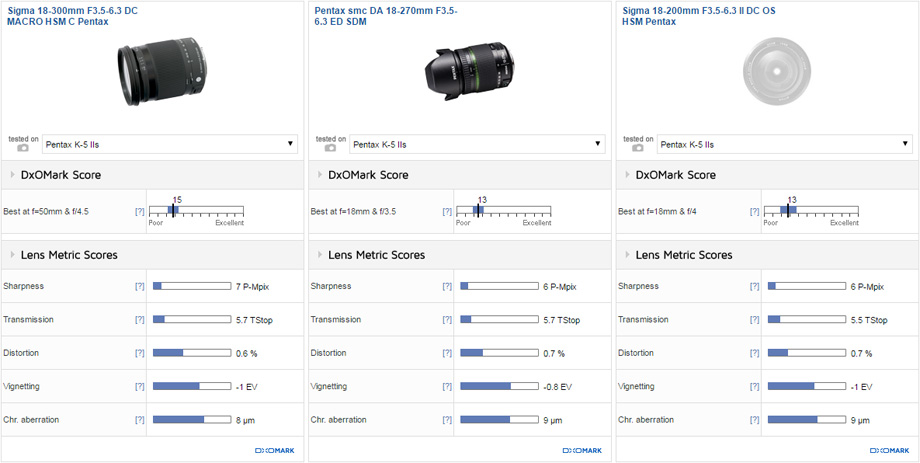
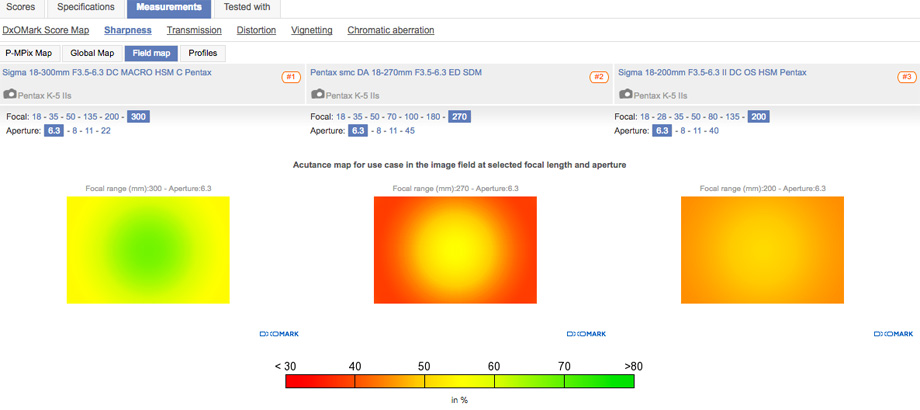
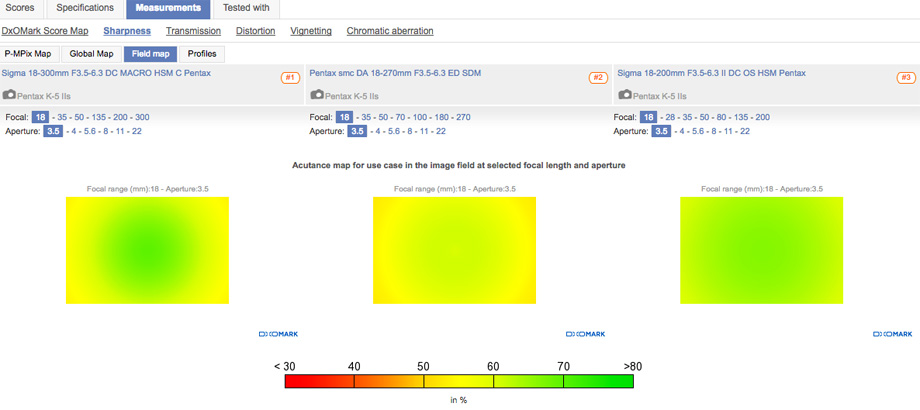
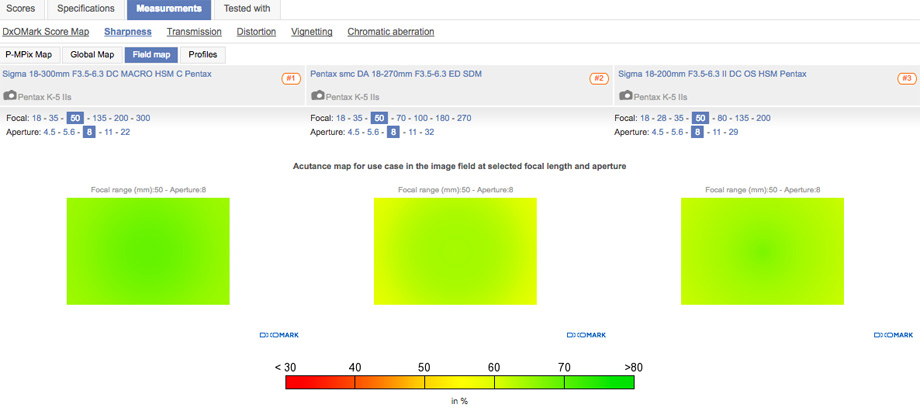
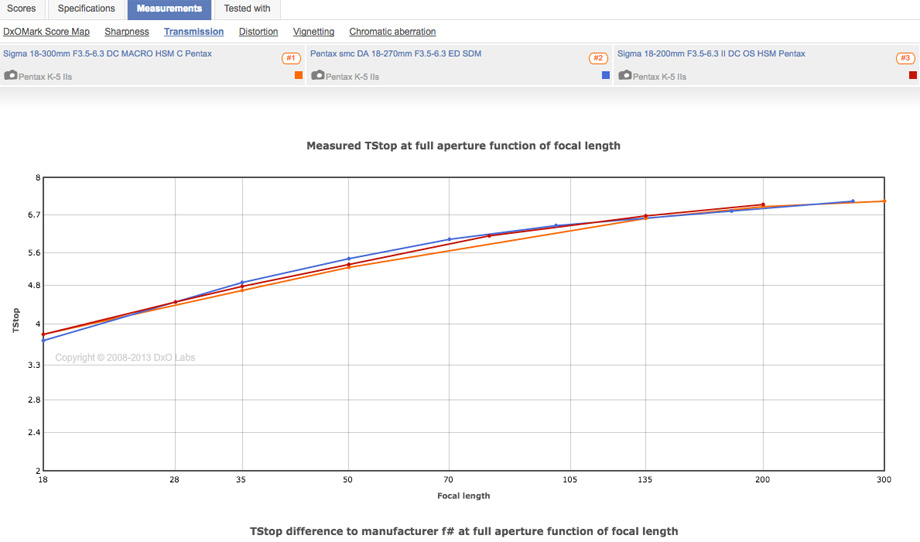
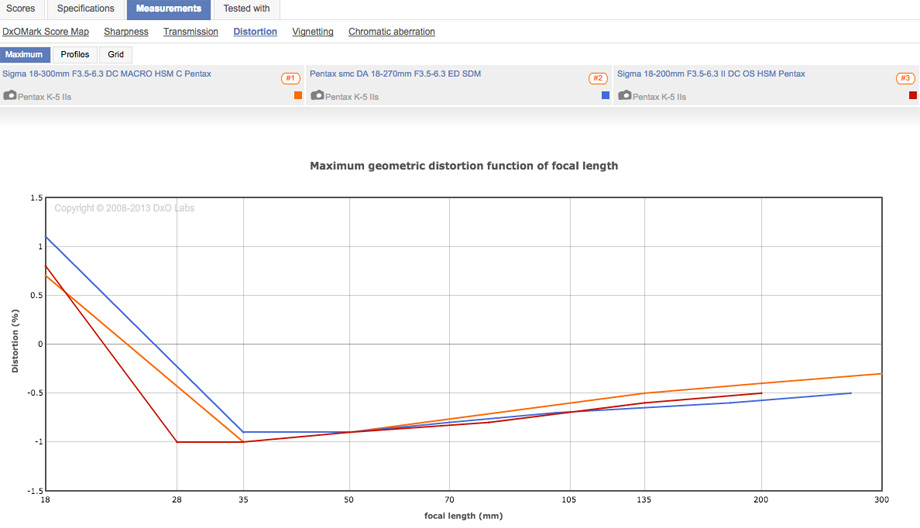
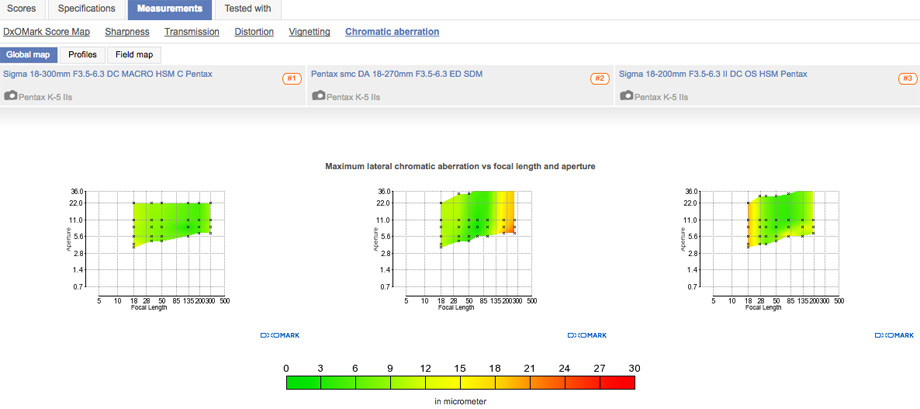
DXOMARK encourages its readers to share comments on the articles. To read or post comments, Disqus cookies are required. Change your Cookies Preferences and read more about our Comment Policy.